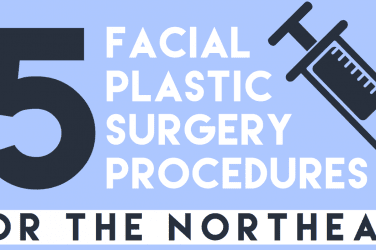ICD-10-PCS stands for International Classification of Diseases, Edition 10. It is a Procedure Coding System (PCS) that assists the medical billing and coding experts to convert the treatment procedures into alphanumeric codes. These codes are a national asset and uniformly recognized across the US healthcare system.
A medical claim carries codes for symptoms and diagnoses in addition to the procedural codes before the bill is sent for reimbursement.
Centers for Medicare and Medicaid Services (CMS) developed the coding system with the assistance of experienced doctors and specialized individuals to work in the best interest of the medical billing services in US healthcare industry. With a longer length of the codes, the new version replaces ICD-9 (Edition 9) and brings in a bunch of new codes.
ICD-10 comprises 68,000 codes which means the government wants to know more about what doctors are doing while caring for the patients. Moreover, it is a chance for the doctors to explore their real potential concerning providing detailed treatments.
The most important thing to note here is, in the value-based system, the specificity of these codes derives the right reimbursements. It is and was a bit of work for the providers, but in this way, the evaluation teams know the exact amount of work done by the healthcare professionals.
Let’s now dive into these tips that may turn out to be a quick guide for the medical coders. They are now asked to look into the world of purpose & objectives. By knowing what to code and what not to code, they go deeper into the anatomy of procedures.

Tip #1: The Selection of the Root Operation
The new feature of the coding system that enables the functionality of the ICD-10-PCS is the root operation. It occurs in the hospital inpatient setting and mostly refers to the medical and surgical procedures during the treatment.
Root operation deals with the slight surgical intervention of a body part or the complete removal of a body part.
ICD-9 had a generic linkage to the anatomical terms, for example; an ‘excision’ was an ‘excision.’ There was no way of telling whether the intent was to remove part of the organ or the entire organ. It is where it has changed by the production of new codes.
The focus on intent in the new coding system creates ripples among the coders & the providers alike.
Thereupon, as part of the ICD-10-CM setup, the medical billing and coding professionals are expected to deliver focusing on the intent and objective behind procedures.
Tip #2: Classifications of the Root Operations
- While the coding process follows after a slight surgical procedure or the complete removal of the body part, root operations include Excision, Resection, Detachment, Destruction, and Extraction.
- The root operations which remove fluids/gases/solids are Drainage, Extirpation, and Fragmentation.
- The root operations for cutting are Division and Release.
- When the doctors move or put back a body part, it includes in groups like Transplantation, Reattachment, Transfer, and Reposition.
- The procedure that involves a change in the path/diameter of a tubular body has root operations in the form of Restriction, Occlusion, Dilation, and Bypass.
- When a physical device is involved, we may classify it under the root operations of Insertion, Replacement, Supplement, Change, Removal, and Revision.
- When the providers examine, the root operations include Inspection and Map.
- Simple repairs come under Control and Repair.
- Other objectives may be listed under Fusion, Alteration, and Creation.
Tip #3: No Effect on the CPT Codes
Medical billing outsourcing companies new to this coding system must not confuse the ICD-10-PCS update with an alteration in the Current Procedural Terminology (CPT) coding schematics. There are no apparent changes in the outpatient CPT/billing codes as of yet.
For more clarity, the ICD-10 diagnosis codes are to be used for health care services provided in the US and ICD-10 procedure codes are to represent all hospital inpatient actions.
Tip #4: The Intent
ICD-10 implements in total effect upon anyone or any organization that comes under the HIPAA law. It’s not just the medical billing services in the USA but the providers, clearinghouses and the payers as well.
The intention is the underlying cause that reflects as the gist of this coding system. The procedures may involve many root operations, each of which suggests a purpose and the proof of intent.
For instance, if the intent leads to an incision, it is difficult to tell whether the cut is shallow or deep. When there are multiple layers of skin involved, the medical billing and coding team should write for the deepest level of tissue involvement on the medical claim.
Tip #5: The Story behind Biopsies – Excision or Drainage
The questions like whether the biopsy performed involve Excision or Drainage keep coming up. Ordinarily, going by the book, if the fluids or gases are shown a way out of the system, drainage will be the correct root operation. And, if the tissue is excised, excision is the right root operation.
A few examples of Drainage are drainage of the abscess, paracentesis, and thoracentesis.
The case study below sheds light on the coding direction.
- A patient comes with a subcutaneous abscess of the left foot.
- The doctor performs a needle aspiration of the abscess and fluid is sent to the lab to help in the diagnosis
- Next comes incision and drainage of the abscess via the open method
- The tissue is debrided of necrotic tissue with the scalpel
- Subcutaneous tissue is then stitched with 3-0 vicryl and skin is closed with 4-0 prolene.
- End of procedure
How will the code look like?
0J9R3ZX – drainage of the abscess to determine what we are dealing with, left foot, the percutaneous method
0J9R0ZZ – drainage of the abscess for treatment purpose, left foot, the open method
0JBR0ZZ – excisional debridement, left foot, the open method
The Science of 1s and 0s
The general computer code has to follow the 1s and the 0s to move around in the digital stream. Similarly, medical procedures need alphanumeric combinations to be understood and recognized in the US healthcare system. The main point in medical coding nowadays is to understand the purpose of a procedure before getting down to the symbolic representations.
As a coder, if you can answer a simple question of what the provider is trying to accomplish through this procedure, the coding ambiguities untangle themselves automatically.







